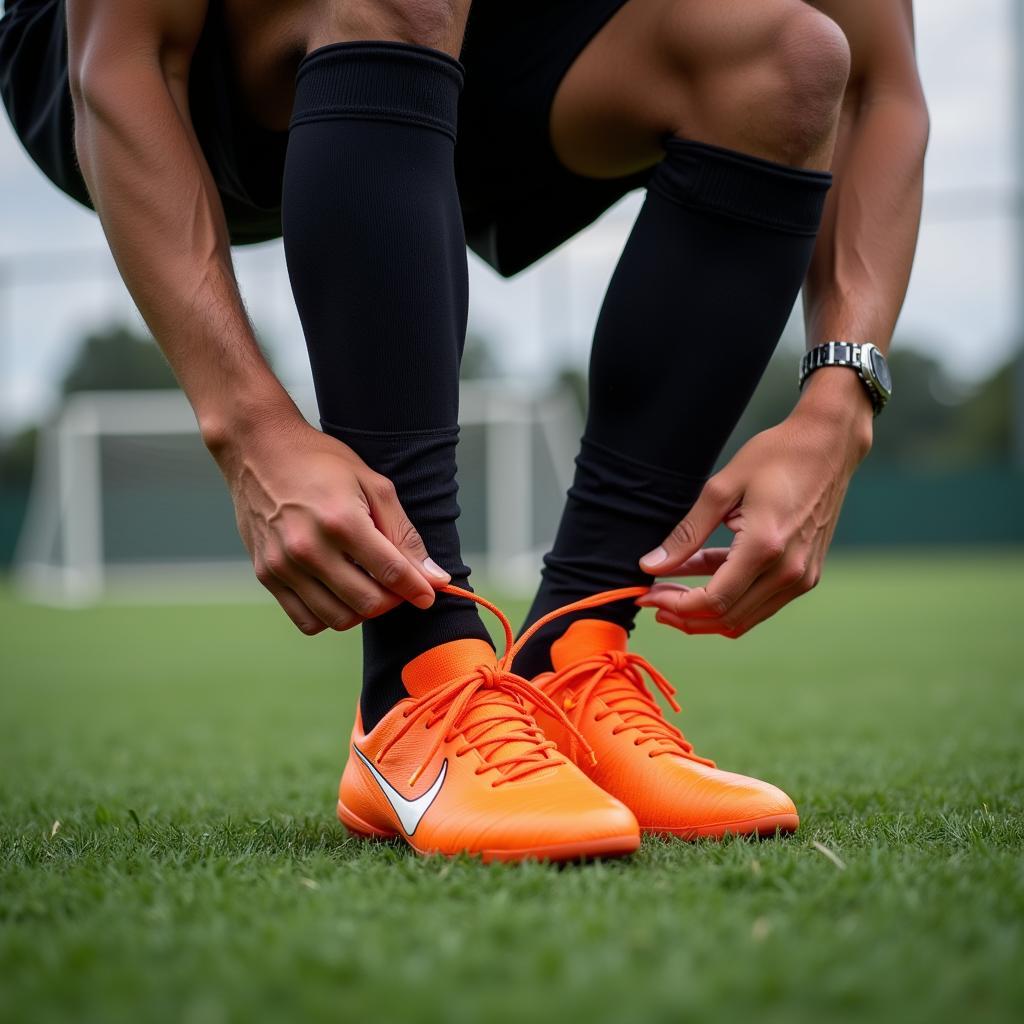How Big Are Football Players’ Feet?
October 19, 2024As a professional footballer, I’m often asked about the tools of the trade. And besides the obvious – the ball – people are always curious about boots, and specifically, what size we wear! It’s no surprise really, because foot size plays a crucial role in a player’s balance, power, and overall performance on the pitch. So, how big are football players’ feet? Let’s dive in!
Beyond Shoe Size: Understanding the Factors at Play
While the average shoe size for men varies globally, professional footballers often have larger than average feet. But it’s not just about length; factors like foot width, arch height, and even playing position can influence a player’s boot choice.
Genetics and Early Development
Just like height and build, genetics play a significant role in foot size. Tall players often have larger feet, although there are always exceptions to the rule! Additionally, early development and training during adolescence can also contribute to increased foot size in athletes.
The Demands of the Game
Football requires incredible agility, balance, and power. A larger foot provides a wider base of support, enhancing stability and balance, crucial for quick turns, jumps, and changes in direction.
Position-Specific Needs
While a larger foot can be advantageous, the ideal size can vary depending on the player’s position:
- Goalkeepers: Often prefer slightly larger gloves for a better grip and larger surface area to block shots.
- Defenders: Benefit from a good balance of size and agility, requiring boots that provide both stability and maneuverability.
- Midfielders: Need boots that facilitate precise passing, dribbling, and shooting, often opting for a snug fit.
- Forwards: Like strikers, prioritize speed and agility, often choosing lightweight boots for quick acceleration and sharp turns.
Dispelling the Myths: It’s Not Just About Size
While a larger foot can offer some advantages, it’s not the be-all and end-all in football. Technical skill, tactical awareness, and mental fortitude are just as crucial for success on the pitch.
“Some of the greatest footballers in history haven’t had the biggest feet,” says Dr. James Carter, a leading sports scientist specializing in football performance. “It’s about how effectively a player utilizes their physique and combines it with their technical abilities.”
Finding the Perfect Fit: The Importance of Proper Footwear
Regardless of size, proper footwear is paramount for any footballer. Ill-fitting boots can lead to blisters, discomfort, and even injuries, hindering performance and impacting a player’s career longevity.
 Footballer Preparing for a Match
Footballer Preparing for a Match
When choosing boots, players consider:
- Foot Length and Width: Ensuring a snug fit without being too tight.
- Arch Support: Providing adequate support to prevent foot fatigue and potential injuries.
- Material and Construction: Opting for breathable, durable materials that can withstand the demands of the game.
- Stud Configuration: Choosing the appropriate studs based on playing surface and weather conditions for optimal traction and stability.
Conclusion: Size Matters, But It’s Not Everything
So, how big are football players’ feet? While larger than average, it’s not just about size. It’s about finding the right balance between foot size, boot technology, and individual playing style. Ultimately, it’s the combination of physical attributes, technical skills, and mental strength that separates the good from the great in the beautiful game.
FAQs
1. What is the average shoe size of a professional footballer?
While there’s no definitive answer, studies suggest the average shoe size for professional footballers falls between US sizes 9 and 11 (UK 8-10).
2. Do footballers with bigger feet have an advantage?
A larger foot can provide a wider base of support, enhancing balance and stability. However, it’s not the only factor determining success in football.
3. What happens if a footballer’s boots are too big or too small?
Ill-fitting boots can cause discomfort, blisters, and even injuries, impacting performance and potentially shortening a player’s career.
4. How often should footballers replace their boots?
Depending on the frequency and intensity of play, footballers should replace their boots every 3-6 months or when they show signs of wear and tear.
5. Do footballers wear special socks?
Yes, footballers often wear specially designed socks that provide cushioning, support, and moisture-wicking properties for comfort and performance.
Need more information? Check out these related articles:
For any further inquiries or assistance, please don’t hesitate to contact us:
Phone: +84 396 443 476
Email: [email protected]
Address: 23 Thang 3 Street, Dak Nia, Gia Nghia, Dak Nong, Vietnam.
Our dedicated customer support team is available 24/7 to assist you!